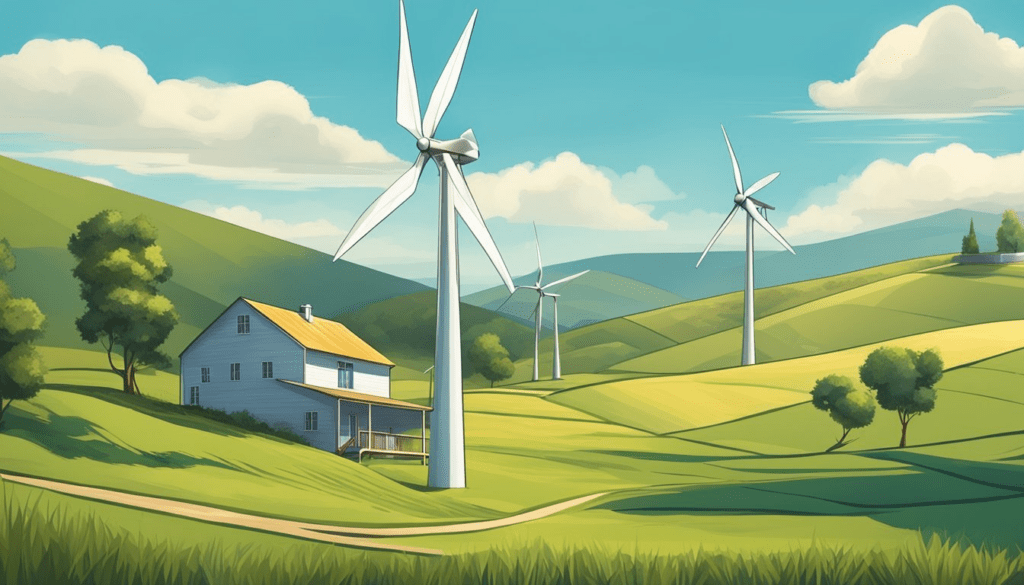In a groundbreaking development for the renewable energy sector, the UK’s first “motionless” wind energy system has been installed on a rooftop in Oxford. This innovative technology, developed by US company Aeromine Technologies, represents a significant leap forward in addressing some of the key challenges associated with traditional wind turbines while potentially revolutionizing urban energy production.
The Technology Behind Motionless Wind Energy
Unlike conventional wind turbines with their iconic spinning blades, Aeromine’s system harnesses wind energy without any visible moving parts. The technology utilizes aerodynamic principles to capture and amplify wind energy, converting it into electricity without the need for rotating blades.
While the exact details of the technology are proprietary, it’s understood that the system creates a pressure differential as wind flows around its stationary components. This pressure difference is then used to drive a generator, producing electricity in a manner that’s both efficient and remarkably quiet.
Advantages Over Traditional Wind Turbines
The motionless wind energy system offers several significant advantages over traditional wind turbines:
- Noise Reduction: Without spinning blades, these systems operate almost silently, making them ideal for urban and residential areas where noise pollution is a concern.
- Wildlife Safety: The lack of moving parts significantly reduces the risk to birds and bats, addressing one of the main ecological concerns associated with traditional wind turbines.
- Space Efficiency: The compact design allows for easy installation on rooftops and other urban structures, maximizing energy production in areas where space is at a premium.
- Aesthetics: The sleek, motionless design may be more visually appealing in urban environments compared to large, rotating turbines.
- Maintenance: With fewer moving parts, these systems potentially require less maintenance over time, reducing long-term costs.

Ecological Impacts
The introduction of motionless wind energy systems holds the potential for transformative ecological benefits across various dimensions. One of the most significant advantages is the reduction in bird and bat mortality. Traditional wind turbines are responsible for the deaths of hundreds of thousands of birds and bats each year, as the large, rotating blades can strike these animals in flight. Motionless wind systems, by contrast, drastically reduce this risk, thereby offering a safer alternative that protects local wildlife populations and preserves biodiversity.
Additionally, the deployment of motionless wind energy systems minimizes habitat disruption. Traditional wind farms often require large tracts of land, which can fragment natural habitats and interfere with migration patterns of wildlife. However, motionless systems can be installed on existing structures such as buildings and bridges, reducing the need for new wind farms and thus preserving natural habitats. This integration into the built environment ensures that renewable energy generation does not come at the cost of ecological integrity.
Another important benefit of motionless wind energy systems is their ability to operate almost silently. Traditional wind turbines can generate significant noise, which not only disturbs nearby human communities but can also affect wildlife, particularly species sensitive to sound. The near-silent operation of motionless systems alleviates this problem, reducing noise pollution and fostering a more harmonious coexistence between energy infrastructure and the environment.
These systems also play a crucial role in promoting urban sustainability. By enabling efficient wind energy production within city environments, they reduce urban reliance on fossil fuels, which in turn leads to improved air quality. Moreover, as cities adopt these systems, they can mitigate the urban heat island effect, where dense concentrations of buildings and human activity cause urban areas to become significantly warmer than their rural surroundings.
Land conservation is another key ecological benefit of motionless wind energy systems. Since these systems can be mounted on existing buildings, they require minimal additional land use. This is particularly important in preserving natural landscapes and agricultural lands, which might otherwise be converted into wind farms. By conserving land, we can maintain ecosystems and food production areas that are vital to both environmental health and human livelihoods.
Finally, the widespread adoption of motionless wind energy systems would contribute to a substantial reduction in the carbon footprint associated with electricity production. As a renewable energy source, wind energy produces no direct carbon emissions. The increased use of motionless systems would therefore help to decarbonize the energy grid, aligning with global efforts to combat climate change and transition towards a low-carbon future.
Motionless wind energy systems offer a promising alternative to traditional wind turbines, providing numerous ecological benefits. These include reducing wildlife mortality, minimizing habitat disruption, lowering noise pollution, enhancing urban sustainability, conserving land, and reducing carbon emissions. As we seek to expand renewable energy infrastructure, motionless wind systems could play a crucial role in creating a more sustainable and ecologically responsible energy landscape.

Challenges and Future Outlook
While the motionless wind energy system shows great promise, several challenges need to be addressed:
- Efficiency Comparison: More data is needed to compare the energy output of these systems to traditional wind turbines and other renewable energy sources.
- Scalability: The technology needs to prove it can be scaled up effectively to meet larger energy demands.
- Cost: Initial installation costs and long-term economic viability need to be assessed against other renewable energy options.
- Public Acceptance: As with any new technology, public education and acceptance will be crucial for widespread adoption.
Despite these challenges, the potential of motionless wind energy systems is significant. As cities worldwide strive to become more sustainable and energy-independent, technologies like this could play a crucial role in the urban energy mix of the future.
In Short
The installation of the UK’s first motionless wind energy system in Oxford marks an exciting step forward in renewable energy technology. By addressing key ecological concerns associated with traditional wind turbines while offering a space-efficient solution for urban areas, this innovation could help accelerate the transition to clean energy.
As we continue to grapple with the challenges of climate change and urban sustainability, technologies like Aeromine’s motionless wind energy system demonstrate that innovative thinking can lead to solutions that are both environmentally friendly and practical for modern urban living. The coming years will be crucial in determining whether this quiet revolution in wind energy can live up to its promising potential.
Related Content
- China building two-thirds of world’s wind and solar projects
- Microsoft is bringing Copilot to Windows 10 in a new update that will see a billion more users get AI access
- A Week in Tech: AI, Cybersecurity, and Sustainability
- The Intersection of Wealth, Sustainability, and Climate Change in 2024
- Top 10 Richest Countries in 2024 by GDP per Capita: Europe and Asia Lead the Way
- Broad spectrum of global issues that highlight the interconnectedness of technology, environment, entertainment, and global affairs
- Could these ‘motionless’ turbines solve wind energy
- Innovative Silent Wind Power: The Game-changing Bladeless
- Motionless Wind Generation: A Quiet Alternative to Wind turbines
- Revolutionizing Rooftop Energy: Bladeless Wind Turbines

